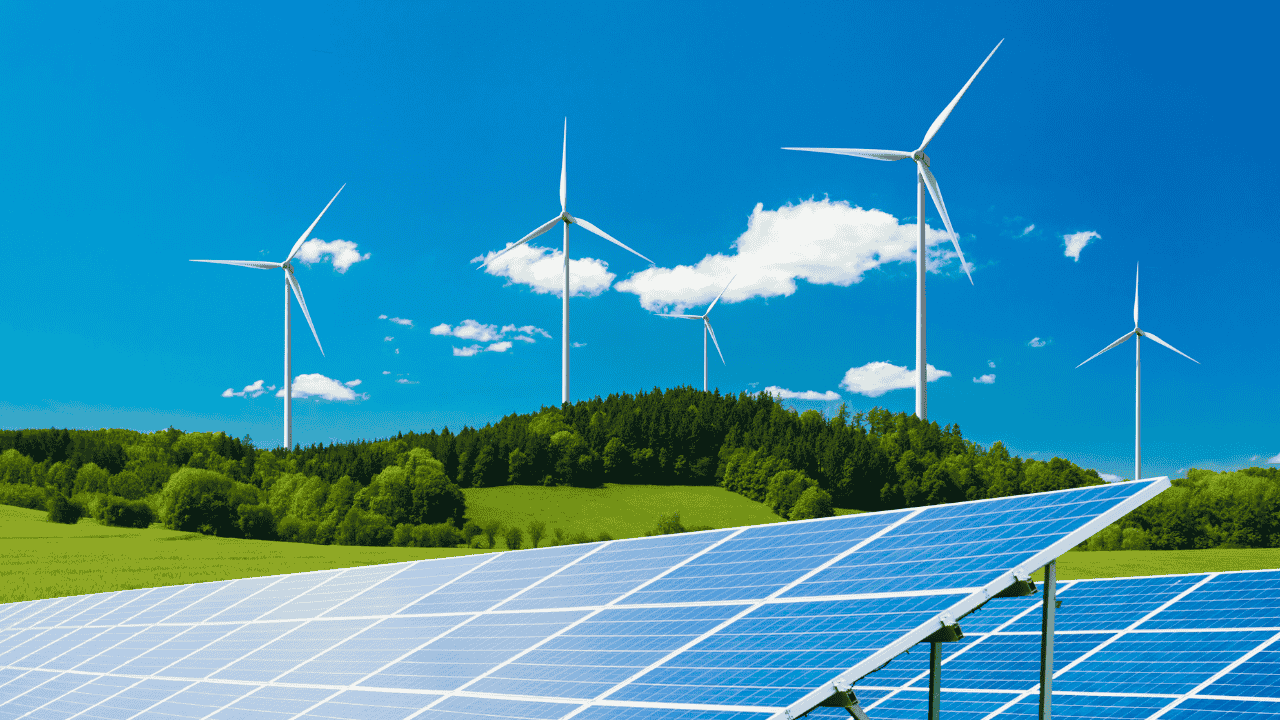Introduction
India, with its rapidly expanding clean energy capacity, is emerging as a major global player. In 2024, the country added a record 24.5 GW of solar energy capacity, securing the third position worldwide. This achievement is not only a symbol of technological progress but also reflects India’s economic and environmental commitment. However, behind this success lies a serious challenge— the massive shortfall in climate finance, which is becoming the biggest obstacle in achieving India’s 2030 climate goals.
India’s Record Growth in Clean Energy
Achievements in 2024
India made unprecedented progress in the clean energy sector in 2024. The country’s total renewable energy capacity reached 220.10 GW, with solar contributing 105.65 GW and wind 51.6 GW.
Key Figures:
Record annual capacity addition of 29.52 GW in 2024
Solar energy saw a rise of 23.83 GW, much higher compared to 2023
Wind energy added 3.4 GW of new capacity
Rooftop solar grew by 53%, with 4.59 GW new capacity
India’s Global Position
In the UN Secretary General’s 2025 Climate Report, India was recognized along with Brazil and China as a leading developing country in solar and wind expansion. India is now the third-largest renewable energy producer in the world and the fourth-largest in wind power capacity.
Employment and Economic Impact
Expanding Job Opportunities
In 2023, India’s renewable energy sector employed 1.02 million (10.2 lakh) people, highlighting the nation’s leadership in clean energy and its focus on green jobs.
Sector-wise Employment Distribution:
Hydropower: 453,000 jobs (largest employer)
Solar Photovoltaic: 318,600 jobs
Wind Energy: 52,200 jobs
Biogas: 85,000 jobs
Off-grid Solar: 80,000+ jobs
Contribution to GDP
The renewable energy sector contributes 5% to India’s GDP growth. It is not only helping in environmental conservation but has also become a significant driver of economic development.
The Challenge of Climate Finance
Huge Investment Requirements
To meet its 2030 climate targets aligned with the 1.5°C pathway, India will need investments between $1.5 trillion and $2.5 trillion, mainly in:
Expansion of solar and wind energy projects
Modernization and strengthening of electricity grids
Battery storage systems
Green hydrogen technologies
Sustainable transport systems
Climate-resilient agriculture
Current Financial Situation
Although India’s green finance market is growing, it is still far below the required level. By December 2024, India had issued $55.9 billion in green, social, and sustainability-related debt, with green bonds accounting for 83%.
Problems in Financial Gap:
Current investments are far behind actual needs
Difficulty in channeling funds to small and medium enterprises
Lack of investment in rural projects
Slow development of local energy plans
Innovative Financing and Solutions
Blended Finance Model
Blended finance is emerging as a significant solution, combining government capital, private investment, and international grants to share risks. This model is proving effective in channeling funding to small and medium-sized projects.
Benefits of Blended Finance:
Reduces project risks
Encourages private sector investment
Promotes innovation and technology development
Balances financial returns with development goals
Other Financial Instruments
Green Bonds: India’s green bond market is growing rapidly and is expected to attract more than $45 billion by 2025.
Carbon Credit Trading: A new scheme could provide fresh financial resources.
Performance-based Incentives: Helps build investor confidence and attract more investment.
Government Policies and Initiatives
National Green Hydrogen Mission
Launched with an outlay of ₹600 crore, the mission aims to cut fossil fuel imports worth ₹1 lakh crore and reduce carbon emissions by 50 million metric tons by 2030.
PM Surya Ghar Scheme
Launched in February 2024, this scheme targets rooftop solar panels in 1 crore households. Within ten months, 700,000 rooftop solar installations were completed.
Investment Commitments
India’s renewable energy sector has received investment commitments worth ₹32 lakh crore. Additionally, bids have been invited for projects totaling 169 GW capacity.
Future Opportunities and Targets
2030 Target
India has set a target of 500 GW non-fossil fuel-based capacity by 2030, requiring an average annual addition of 50 GW renewable energy capacity.
Long-term Vision
To achieve net-zero by 2070, India will need around $10.1 trillion in total investments. According to IRENA, if India adopts a 1.5°C-aligned pathway, its average annual GDP growth could reach 2.8% by 2050, nearly double the G20 average.
Technological Innovation
India will increasingly focus on decentralized grids, battery-integrated renewables, and green hydrogen technologies in the future.
Addressing the Challenges
Institutional Reforms
Mobilizing domestic institutional capital (EPFO, LIC, pension funds)
Regulatory reforms and development of ESG frameworks
Building a robust green project pipeline
Policy Measures
Tax exemptions and fiscal incentives to attract private investment
Credit guarantees and risk-sharing mechanisms
Use of blockchain and AI for finance tracking and risk assessment
Why This Matters for Your Exam Preparation
UPSC Mains Relevance:
GS Paper III (Environment & Energy Security): Covers India’s renewable energy policies, climate change mitigation strategies, and energy security challenges. Facts like addition of 24.5 GW solar energy and India’s rank as 3rd globally are significant.
GS Paper II (Governance & International Relations): The climate finance challenge ($1.5–2.5 trillion needed) reflects on policy-making, public-private partnerships, and India’s role in global climate leadership.
GS Paper III (Economy): Renewable energy’s 5% contribution to GDP, creation of 10.2 lakh jobs, and financial innovations like green bonds and blended finance are crucial in the economic context.
Prelims Key Facts:
India’s total renewable capacity: 220.10 GW
Solar addition in 2024: 24.5 GW
Global ranking: 3rd in solar energy
2030 target: 500 GW non-fossil capacity
Jobs: 1.02 million (2023)
Possible Mains Question:
“Despite the successes of India’s clean energy mission, climate finance remains a major challenge. Analyze the need and role of innovative financial mechanisms in bridging this financing gap.”






